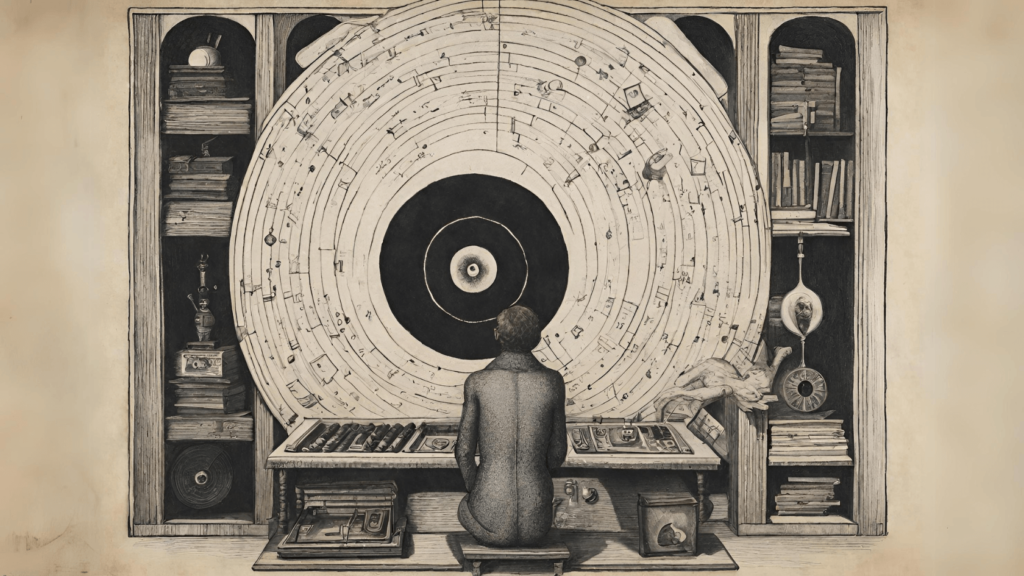The first step in the expressive playlisting process involves noticing, and following, pulls. In this post I will unpack the meaning of this term and identify its aspects.
A pull is a feeling of personal affinity with some aspect of the world. It’s captured in phrases like “I feel drawn to…” or “I’m fascinated by…” or “I love…” This movement toward what beckons you is suggested in the etymology of words like “incline” and “list” (used as a verb). Being listless, is the absence of this feeling of enthusiasm for something and the sense of intrinsic direction that comes with it
This is not a new idea and here are how some other writers—educators, researchers and psychologists—have put this experience into words:
“We are like plants, full of tropisms that draw us toward certain experiences and repel us from others. If we can learn to read our own responses to our own experience—a text we are writing unconsciously every day we spend on earth—we will receive the guidance we need to live more authentic lives.”
Parker Palmer, Let Your Life Speak
“It is when one is struck by something – positively, negatively, or with curiosity – that the beginning of a penetrating observation can come. This is spoken of as being drawn to or being spoken to by the thing; something about it engages us and we want to know it better. This process is seen as circumventing the possible arbitrariness of just being allocated an object of study. Being able to find the thing that it would be fruitful for one to study is not only a matter of waiting to be ‘spoken to’: it requires a degree of patience and a child-like receptivity.”
Isis Brook, Goethean Science as a Way to Read Landscape
“Say you enjoy visual arts and you go to a gallery and wander through it. Most of the reactions that you have to particular pieces of art are cognitive, intellectualized responses – you can appreciate this person’s use of color and that person’s use of perspective and texture. Suddenly you turn a corner. There is a piece of art and you stand transfixed by it…it has reached you at a level that is entirely different from any other piece of art in that gallery. Now that piece of art is speaking to the unconscious…Very often, I think, people learn more about themselves when they suddenly confront that unconscious than they do from all the reflective, after-the-fact, self-explanations that they generate to explain their behavior.”
Alan Waterman from Discussions of Ego Identity
“Something in a phenomenon may draw me, like a magnet, toward it. Something in me may compel me toward some specific person or thing. Or, some mutual attraction or instant harmony with others may conspire toward our joining or connecting with one another.”
Clark Moustakas, Phenomenological Research Methods
“…growth takes place when the next step forward is subjectively more delightful, more joyous, more intrinsically satisfying than the last; that the only way we can ever know what is right for us is that it feels better subjectively than any alternative.The new experience validates itself rather than by any outside criterion. It is self-justifying, self-validating…We don’t do it because it is good for us, or because psychologists approve, or because somebody told us to, or because it will make us live longer, or because it is good for the species, or because it will bring external rewards, or because it is logical. We do it for the same reason that we choose one dessert over another. I have already described this as a basic mechanism for falling in love, or for choosing a friend, i.e., kissing one person gives more delight than kissing the other, being friends with a is more satisfying subjectively than being friends with b…In this way, we learn what we are good at, what we really like or dislike, what our tastes and judgments and capacities are. In a word, this is the way in which we discover the Self and answer the ultimate questions Who am I? What am I?”
Abraham Maslow, Toward a Psychology of Being
In this section, I’m going to describe defining aspects of the pull-following process at the heart of expressive playlisting.
Pull-Following is Intrinsically Motivated
When you are following a pull, the activity is an end in itself. This is suggested by the Maslow quote above. It differs from activities that are “means” to some other end, such as “having to go to work in order to make an income” or “fixing the house in order to increase property value.” When you are following a pull, there is no “in order to” that is separate from the pull-following process itself. The reward for engaging in the activity is intrinsic to the activity. And in the case of expressive playlisting, the activity involves noticing when something in a song piques your interest and placing it in a playlist so that you can come back to it again and again.
Following Pulls Begins with Receptivity
Pulls are noticed, not created. They require an open, receptive stance; a willingness to be touched by the things of the world. If we give gentle attention to our responses to phenomena—in this case music—we’ll notice subtle flickers of attraction and aversion. That flicker of attraction is the cue to put the song in a playlist (you might start with a simple playlist called “pulls” to gather these together in one place—as discussed in the last post, they will become differentiated over time, spawning their own playlists). You probably won’t know exactly what you’re responding to at first—only that something in the song draws you. As you come back to the song again and again, it will reveal its particular allure to you and you’ll be able to place the song with greater precision in your growing family of playlists. Through the process of exploring what pulls you in music, your taste will become further differentiated. Over time this will lead to the elaboration of a distinct personal listening style.
There is an Image Inherent in What Pulls Us
In my experience, the essence of the pull slowly comes into clarity with repeated listening to a song, and it often appears at the edge of awareness as a fantasy image with its own distinct feeling tone. My experience is that these images have a “dynamic” quality—rather than being a static picture, they seem to unfold in time like a gesture or a dance.
You may not see the fantasy image pictorially—sometimes its more like you feel this quality in the song, or notice it as an association arising in the mind as you listen, like a metaphor. I’ve found this can be a very fleeting, wispy thing and getting a handle on it can be tricky. I sometimes use a sentence prompt like this to draw it out as I feel into the song: “This song is like…” Here are some that have emerged for me:
- “This song is like something large, lumbering toward me” (Lurch),
- “This song is like being pummeled by a percussive massage gun” (Pulse)
- “This song is like living inside an 80s coming-of-age film” (Forward).
I will sometimes practice just listening for qualities in songs—even songs I’m not into—and identifying them using a list like the one below. I’ve found this helps me improve at noticing this dimension of music.
Pulls are Sensed through Feeling
The pull is initially experienced as a gut reaction. It’s holistic, like an intuition. It’s the sense that “there’s something here for me.” It’s a feeling that is simultaneously a knowing, albeit a fuzzy one: “I’m sort of drawn to this, even though I don’t know why yet.” In my experience, there is usually something further to discover here and it gradually comes into focus as you develop an ongoing relationship with the song.
Pulls are Encountered in the Present Moment
Pulls happen in the here-and-now. The open, receptive and attentive stance described above depends on being in the present moment, and so practices like mindfulness make it easier for one to attend to pulls. To the extent that we are ruminating, worrying or functioning on autopilot, our sensitivity to our own reactions to things will be dulled. The kind of listening I’m describing is itself a kind of mindfulness practice: it’s listening both to the song and to your inner response to it at the same time. Slowing down and centering yourself—or any practice that brings you more fully into the here and now—can help you do this.
We’re Revealed in What Draws Us
One last aspect of pull-following that’s hinted at in the quotes above is the self-revealing component. Each one of us is a mystery, and I believe we can come to know who we are at deeper levels of our being through following pulls and discovering what speaks to us. The psychologist James Hillman once wrote: “Tell me what you yearn for and I shall tell you who you are.” There is a deep coherence to our way of being as an individual—we each have a distinct style of being a person—and we can begin to get a more vivid sense of it by paying attention to the phenomena that captivate us in this personal way. The songs that pull us strongly are like mirrors reflecting back something of our individual essence.
I believe Nietzsche was addressing this link between who we are and what we’re drawn to when he raised the question “But how can we find ourselves again? How can the human being get to know himself?” I want to close this post with his answer:
Let the young soul look back on its life with the question: What have you up to now truly loved, what attracted your soul, what dominated it while simultaneously making it happy? Place this series of revered objects before you, and perhaps their nature and their sequence will reveal to you a law, the fundamental law of your authentic self. Compare these objects, observe how one completes, expands, surpasses, transfigures the others, how they form a stepladder on which until now you have climbed up to yourself; for your true being does not lie deeply hidden within you, but rather immeasurably high above you, or at least above what you commonly take to be your ego.”
Friedrich Nietzsche, Schopenhauer as Educator
Last Updated on October 12, 2024

